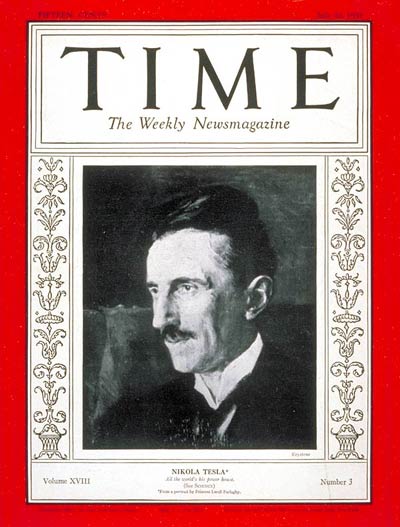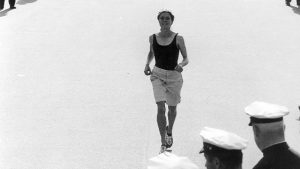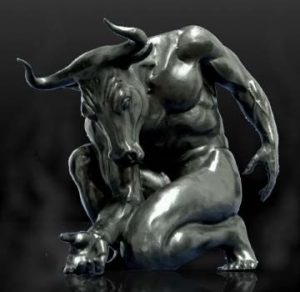Nikola Tesla, more commonly remembered as the inventor of technologies such as the Tesla Coil, was a Serbian-American Scientist, inventor, physicist, mechanical and electrical engineer. Tesla was born on July 10, 1856, in the Austro-Hungarian Empire, which is now known as present-day Luka, Croatia. As an adult, he studied both Mathematics and Physics at the University of Graz and philosophy at the University of Prague. In 1884, at the age of 28, Tesla immigrated to the United States in the search of both freedom and opportunity.1 In June of that same year, Tesla finally set foot in the United States, penniless, but still full of ambition fueled by his dream to revolutionize the world through advancements in electricity.
In the days following his arrival, Tesla was given the opportunity to meet with none other than Thomas Alva Edison, the inventor of the phonograph, the incandescent lightbulb, and the early motion picture camera, just to name a few. More notably, Edison was recognized for the invention of direct current, which was at the time the most popularly used form of electricity.2 His newfound fame distinguished him as a very important and influential person during that time. And Edison recognized the potential that Nikola Tesla possessed, and employed him to work under his supervision.
After months of working under Edison, Tesla began to form a close bond with him, earning the position and title of Edison’s apprentice. Being an apprentice and working closely on research and inventions with Edison himself, Tesla was able to test and further his knowledge on scientific inventions and eventually was able to test theories and inventions of his own. Unfortunately, with this expansion in his capacity of understanding, Tesla was able to analyze certain faults and options for improvements in Edison’s inventions. When he confronted Edison about possible improvements that could have been made to the functioning of direct current, Edison blatantly opposed any of the claims suggested by Tesla. Consequently, both men got caught up in an argument, and Tesla was coerced into resigning from working with Edison.3

However, Nikola Tesla’s improvements in terms of electricity drove him to establish a new form, known as the practical alternating current (AC) motor. This type of current functioned using two sources of alternating current that worked out of phase with one another by creating a rotating magnetic field that would serve as a motor.4 In addition to this, Tesla also introduced his own version of lightbulbs, commonly known as fluorescent light bulbs.5 With the introduction of the AC motor, a lighting system that proved to be more efficient than Edison’s, and a new type of lightbulb, Tesla had managed to slowly take out the competition that he had with Edison. As more people started investing in AC networks, the less people remained with Edison’s “alternate” direct current. With the help of investors such as Westinghouse and J.P. Morgan Jr., Tesla was able to dominate the market for electricity and rise to fame.6

Other advancements made by Nikola Tesla were in the medical field, namely, with medical practices using “Tesla Currents,” which used a form of electrotherapy to produce heat in tissues of the human body; and in other procedures such as “teslinization,” which is where Tesla Coils were used on patients to stimulate high frequencies of electric fields within the body. One of the more recognized inventions made by Tesla are the earliest forms of X-Ray machines.7 Today, we use x-rays in a great deal of medical procedures that require the need to further analyze the condition of patients in areas that are not immediately visible to the human eye. This breakthrough in medicine was made possible by the development of radio, wireless transitions of energy, the discovery of rays that could help penetrate the human tissue, and the use of Tesla currents in medical procedures.8 With these various types of practices and inventions, Nikola Tesla was able to effectively make his mark on the medical industry, most of which still exists in the equipment and practices we use today.
It is no secret that Nikola Tesla represents an ideal example of the American dream; a poor Siberian immigrant leaving everything behind and moving to America to pursue his dreams and making a difference. Undoubtedly, Nikola Tesla has proven to be one of the most influential scientific minds in the fields of medicine, physics, mathematics, and engineering. In his lifetime, he managed to do the things that many of wish to be able to do, which is to revolutionize the way we view the world through ingenuity, innovation, and persistence. Tesla has managed to make his mark on the world and leave his legacy in American History.
- L F. Haas, “Nikola Tesla (1856-1943),” Journal Of Neurology, Neurosurgery, And Psychiatry 72, no. 4 (Feb 2017): 526. ↵
- Guillaume de Syon, “Tesla: Inventor of the Electrical Age,” Canadian Journal Of History 49, no. 2 (August 2014): 347. ↵
- Jill Jonnes, Empires of light: Edison, Tesla, Westinghouse, and the race to electrify the world (New York: Random House, 2003), 50-79. ↵
- Ronald H. Bailey, “Tesla: the wizard who electrified the world,” American History, no. 2 (2010): 52. ↵
- Oliver Graydon, “Master of electrons and photons,” Nature Photonics 9, no. 6 (June 2015): 345. ↵
- Bernard Carlson, “Tesla: Inventor of the Electrical Age,” Publishers Weekly 260, no. 14 (April 8, 2013): 54-55. ↵
- Danijela Vučević , Drago Đorđević, and Tatjana Radosavljević, “Nikola Tesla and medicine: 160th anniversary of the birth of the genius who gave light to the world – part I,” Medicinski Pregled, Vol 69, No 9-10 (2016): 313. ↵
- Vladimir and Milan Baltić, “Nikola Tesla discovered ‘very special radiation’ or X-radiation,” Archive Of Oncology 15, no. 3-4 (Feb 2017): 100-105. ↵



38 comments
Christopher Hohman
Nice article. I had no idea that Tesla was a contemporary of Thomas Edison. I always thought that he was more of a modern figure. But wow how cool that he and Edison worked together. I wonder what might have been if he and Edison had stayed together to continue their partnership. It is too bad that they had a falling out. Edison did alot for medical science that was not something I knew. He really was responsible for many cool wide ranging inventions
Yadira Chavez
Tesla paved the way for numerous advances in the future that involved healthcare, how we use electricity, how we communicate, listen to music, etc. It is strange to not hear his name come up more often. Although i have been aware of him, i never thought that he did so much. I didn’t know that he followed under Edison, so it is really cool that two geniuses worked together and did a lot of good.
Sebastian Carnero
Edison let go an opportunity of improvement and suffered what couldn’t be stopped. Progress. If he had been part of that progress, he could have benefited a bit instead of being discontinued from the industry of electricity. Tesla and his story are both surprising and inspiring. He went with no money to the U.S. and quickly made contact with Edison. He made an improved version of Edison’s discovery and got the investors he needed. He developed the knowledge in many fields and achieve fame and wealth from scratch.
Fumei P.
Nikola Telsa was a great mind, I feel like he doesn’t get as recognition as Thomas Edison. I remember watching a documentary not too long ago thinking, why don’t I know this person. His inventions were revolutionary and still in use today. Most buildings are fitted with fluorescent light blubs, and the x rays are used in modern medicine everyday. The documentary also explored some of his other contributions to radio and wireless transitions of energy.
Kailan Pena
It’s great to see someone appreciating and recognizing the talents of Tesla! This article was very informative and descriptive of Tesla’s life and struggles and I can honestly say I walk away from reading this with new knowledge. I had no idea Tesla paved the way for X-rays and machines like that, it’s truly amazing how much one man alone can do.
Osman Rodriguez
Personally, and I would assume others as well, deem Tesla as a pioneer and founding father of the technology. Tesla, like Volta and Edison, was a key figure in developing new ways to use electricity and to do it in a more efficient manner. His contributions to the standard of living and the medical field are things to be highly regarded. One thing I did not know about Tesla, was that he had an apprenticeship with Edison. What luck to have landed such a position.
Maria Callejas
First of all, the AMAZING title! It grabbed my attention the minute I read it. This was a great insight to such important character in the world’s history, you provide very good information throughout. I had no idea he was mentored by Thomas Edison, that’s incredible! Imagine if the two of them wouldn’t have broken ties, what amazing things they could have done together. Great conclusion, how to define Tesla as a prime example of what the American dream is. Unmistakably, the world would be completely different if it wasn’t for his innovative mind. Incredible article!
Sebastian Castro Ramos
Very interesting article! It is good to see that someone shows interest for such an underappreciated scientist like Tesla. His inventions were revolutionary for the fields mentioned in the article, and it is a shame that Edison wouldn’t accept Tesla’s inputs on his projects because together they could have probably created much more. Tesla also made a wireless power transfer system that unfortunately was deemed as too dangerous and was never fully developed.
Anayeli Prieto
Excellent job on your article! its clear that everyone knows that Thomas Edison discovered electricity, but we never learn about all of the other people that made the contributions to the electricity and power we have today. I’m glad that you decided to write this article on the man who tested out ways to provide us with electrical energy, because he is also taken into consideration. I really hope that each individuals discoveries and inventions are also given an owner of the idea ans we appreciate them as much as we do to the most commonly known scientists.
Gabriela Medrano
It is obvious Tesla was a man of many talents, and very intelligent. I feel Thomas A. Edison had much influence on him and encouraged his way into invention. As an inventor, he accomplished good things like teslinization, that helped with medical procedures which were lacking attention at that time. I had never heard of this individual and it is a great thing that you chose him as your topic. Great article!